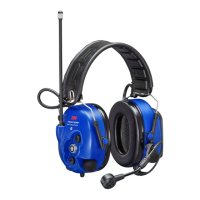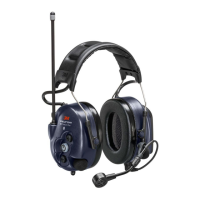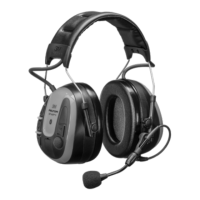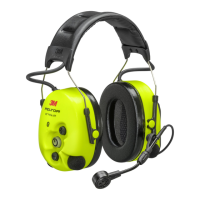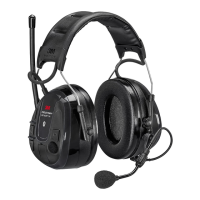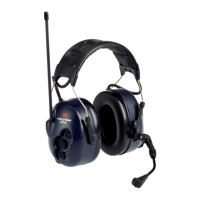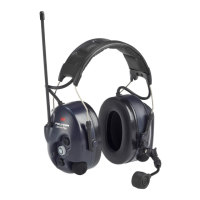Fit Check
When hearing protectors are correctly worn, your voice
should sound hollow and sounds around you should not
sound as loud as before.
Hearing Protector Fit Testing the 3M
™
E-A-Rt
™
Dual-Ear Validation System
The success of your hearing conservation program requires
more than oering earplugs or earmus. Each worker
needs to wear the most eective hearing protector for the
environment and the correct t for their unique anatomy.
With 3M
™
E-A-Rt
™
Dual-Ear Validation System, you can
quickly identify how much protection each worker receives
from their 3M hearing protectors.
The Technology Behind 3M
™
E-A-Rt
™
The 3M
™
E-A-Rt
™
Dual-Ear Validation System is based on
Field Microphone-In-Real Ear (F-MIRE) technology that
measures the eectiveness of hearing protectors from inside
a worker’s ears, providing accurate, quantitative results.
The tester wears a pair of modied 3M
™
probed hearing
protectors connected to a dual-element microphone. A
loudspeaker is placed in front of the tester. When it emits a
broadband noise, the dual-element microphone measures the
signal in the ear canal and outside the ear plug. In less than
ve seconds, the dierence between the two measurements
is calculated and a Personal Attenuation Rating (PAR) is
displayed.
It Starts with PAR
The 3M
™
E-A-Rt
™
Validation System puts the worker in the
context of their noise environment and helps you understand
their level of attenuation.
The results you get from the 3M
™
E-A-Rt
™
is displayed as a
PAR. The PAR is a numerical value that shows the reduction in
sound level within the ear when a hearing protector is worn.
The resulting PAR, combined with the worker’s exposure
to noise, is used to determine if a worker is receiving
appropriate protection from the noise hazard.
Knowing the PAR lets you identify workers who are
inadequately protected, so you can provide real-time
intervention and training.
Key Benets of the 3M
™
E-A-Rt
™
Dual-Ear Validation System include:
• Tests both ears simultaneously in less than 5 seconds
• Science-based, quantitative testing
• Fast, clear, and accurate results
• Tests 7 frequencies 125Hz to 8000Hz
• 3M
™
Earplug, earmu and headset (comms) testing
capability
Contact your 3M Personal Safety Specialist to nd out more
about our 3M
™
E-A-Rt
™
Dual-Ear Validation System or for
assistance in solving your complex or day-to-day hearing
conservation challenges
Helmet Attach Headset
To t the hearing protector:
• Fit the cup: Push the attachment blade rmly into the slot
on the side of the helmet until it clicks into place (Fig 1 & 2)
• Working position: With the cups over the ears press the
arms inwards until you hear a click on both sides indicating
a rm seal (Fig 3).
• Stand-by position: Lift the cups to the xed stand-by
position. In a noisy environment the ear mus must be
worn in the working position at all times (Fig 4).
• Parking position: First lift the cups to the stand-by position
(Fig 4), then rotate them up to the next xed position.
• Ventilation mode: Avoid placing the cups against the
helmet as this prevents ventilation (Fig 5).
• Storage mode: When the helmet is not in use, lower the
earmus and press them inward. Keep the cups clean and
dry and store at normal room temperature.
1 2 3
4 5
